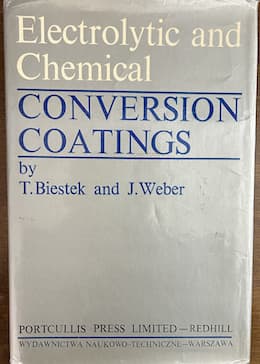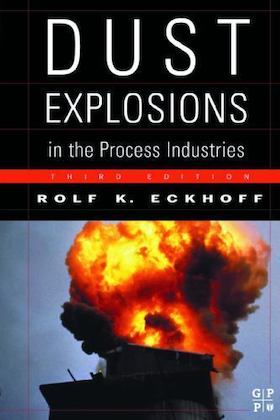
-----
Problem with white rust on zinc dichromate surfaces
Q. We received some materials from a supplier recently that had metal surfaces protected by the zinc dichromate process. Our customer delayed the shipment of our product, so we stored these materials in a trailer (semi type) in our parking lot for nine months. During that time, the trailer was sealed without ventilation and no heating. When we finally took the materials out of storage and completed the project, we did not notice any problems. However, after the equipment was installed at our customer, we noticed that the there was visible corrosion on some of the plated surfaces. The white appearance of the corrosion leads us to believe that it is white rust that zinc will exhibit when a dichromate protective surface breaks down. I have a several questions concerning this condition that we need to address, since the equipment is now located at our customer. The equipment is currently installed in room that is insulated, heated and air conditioned and protected from the external environment.
by Biestek & Weber

on Amazon (rarely)
or AbeBooks (rarely)
(affil link)
1. Is is correct to assume that where the white rust is present, the dichromate in that area is gone?
2. If this happened due to heat and/or presence of moisture when stored in the trailer and the equipment is now in a controlled environment, it is safe to assume that the white corrosion on the zinc plating will not spread and has already done its damage to the zinc?
3. It appears that the white rust on the zinc is not emitting any corrosive vapors/fumes that will further attack additional surfaces. It that safe to assume?
4. We are considering cleaning this corrosion by wiping the affected areas with WD-40
⇦ on
eBay
or
Amazon [affil link]
and coating with a light oil to provide some degree of protection afterwards. Assuming that we cannot easily replace the affected parts or replate them, is this a good method to remove the corrosion? If not, does anyone have other suggestions?
5. We have not observed any pitting of the metal behind the white rust. We assume that is because the corrosion is only taking place on the zinc coating? We assume if the metal had been attacked, we would see red rust or pitting on the metal surface?
6. If there is still some zinc plating left after we clean off the white rust, we assume that we will not see an re-occurrence of this phenomena if the equipment is located in a controlled atmosphere? Is there anything we could wipe on that would provide protection to zinc that has lost its dichromate protection?
7. Does the white rust present any environmental hazard, if we can not reach all areas that exhibit this phenomena for cleaning?
We are not sure if the breakdown of the dichromate occurred in storage, during shipment or if it was a poor application of the dichromate by our supplier. Since this corrosion is cosmetic only, we want to assure our customer that this equipment, once cleaned, will be free from further problems.
Appreciate any advice and assistance that could be offered.
Plant engineer - Fulton, Missouri, USA
2004
A. ICSC 1205 - ZINC POWDER
International Occupational Safety and Health Information Centre (CIS)
[List of Chemicals] [Risk Notes] [Risk Phrases] [Safety Phrases]
[Danger Symbols]
ZINC POWDER ICSC: 1205
October 1994
Blue powder
Merrillite
CAS No: 7440-66-6
RTECS No: ZG8600000
UN No: 1436 (zinc powder or dust)
EC No: 030-001-00-1 (powder)
Zn
Atomic mass: 65.4
TYPES OF HAZARD /
EXPOSURE ACUTE HAZARDS / SYMPTOMS PREVENTION FIRST AID / FIRE
FIGHTING
FIRE Highly flammable. Many reactions may cause fire or explosion. Gives off irritating or toxic fumes (or gases) in a fire.NO open flames, NO sparks, and NO smoking. NO contact with acid(s), base(s) and incompatible substances (see Chemical Dangers).Special powder, dry sand, NO other agents. NO water.
EXPLOSION Risk of fire and explosion on contact with acid(s), base(s), water and incompatible substances.Closed system, ventilation, explosion-proof electrical equipment and lighting. Prevent build-up of electrostatic charges (e.g., by grounding). Prevent deposition of dust.In case of fire: cool drums, etc., by spraying with water but avoid contact of the substance with water.
(1994)
by Miles L. Croom
on AbeBooks
or eBay
or Amazon
(affil link)
InhalationMetallic taste and metal fume fever. Symptoms may be delayed (see Notes).Local exhaust.Fresh air, rest. Refer for medical attention. SkinDry skin.Protective gloves.Rinse and then wash skin with water and soap.
Eyes Safety spectacles.First rinse with plenty of water for several minutes (remove contact lenses if easily possible), then take to a doctor. IngestionAbdominal pain. Nausea. Vomiting.Do not eat, drink, or smoke
during work. Wash hands before eating.Rinse mouth. Refer for medical attention.
SPILLAGE DISPOSALPACKAGING & LABELLING
Extinguish or remove all ignition sources. Do NOT wash away into sewer.
Sweep spilled substance into containers. then remove to safe place.
Personal protection: self-contained breathing apparatus.F Symbol
N Symbol
R: 15-17-50/53
S: (2-)7/8-43-46-60-61
UN Hazard Class: 4.3
UN Subsidiary Risks: 4.2 Airtight.
EMERGENCY RESPONSE -- SAFE STORAGE
Transport Emergency Card: TEC (R)-43GWS-II+III
NFPA Code: H0; F1; R1Fireproof. Separated from acids, bases oxidants. Dry.
IMPORTANT DATA
Physical State; Appearance
ODOURLESS GREY TO BLUE POWDER.
Physical dangers
Dust explosion possible if in powder or granular form, mixed with air. If dry, it can be charged electrostatically by swirling, pneumatic transport, pouring, etc.
Chemical dangers
Upon heating, toxic fumes are formed. The substance is a strong reducing agent and reacts violently with oxidants. Reacts with water and reacts violently with acids and bases forming flammable/explosive gas (hydrogen - see ICSC0001). Reacts violently with sulfur, halogenated hydrocarbons and many other substances causing fire and explosion hazard.
Occupational exposure limits TLV not established.Routes of exposure
The substance can be absorbed into the body by inhalation and by ingestion.
Inhalation risk
Evaporation at 20°C is negligible; a harmful concentration of airborne particles can, however, be reached quickly when dispersed.
Effects of short-term exposure Inhalation of fumes may cause metal fume fever. The effects may be delayed.
Effects of long-term or repeated exposure
Repeated or prolonged contact with skin may cause dermatitis.
PHYSICAL PROPERTIES -- ENVIRONMENTAL DATA
Boiling point: 907°C
Melting point: 419°C
Relative density (water = 1): 7.14
Solubility in water: reaction
Vapour pressure, kPa at 487°C: 0.1
Auto-ignition temperature: 460°C
NOTES
Zinc may contain trace amounts of arsenic, when forming hydrogen, may also form toxic gas arsine (see ICSC0001 and ICSC0222).
Reacts violently with fire extinguishing agents such as water, halons, foam and carbon dioxide.
The symptoms of metal fume fever do not become manifest until several hours later.
Rinse contaminated clothes (fire hazard) with plenty of water.
Card has been partly updated in April 2005. See sections EU classification, Emergency Response.
IPCS
International Programme on Chemical SafetyPrepared in the context of cooperation between the International Programme on Chemical Safety and the European Commission © IPCS 2004
LEGAL NOTICE Neither the EC nor the IPCS nor any person acting on behalf of the EC or the IPCS is responsible for the use which might be made of this information.
I hope this will help you. Steve Moore
- Newburgh, Indiana, USA
2006
Q, A, or Comment on THIS thread -or- Start a NEW Thread
